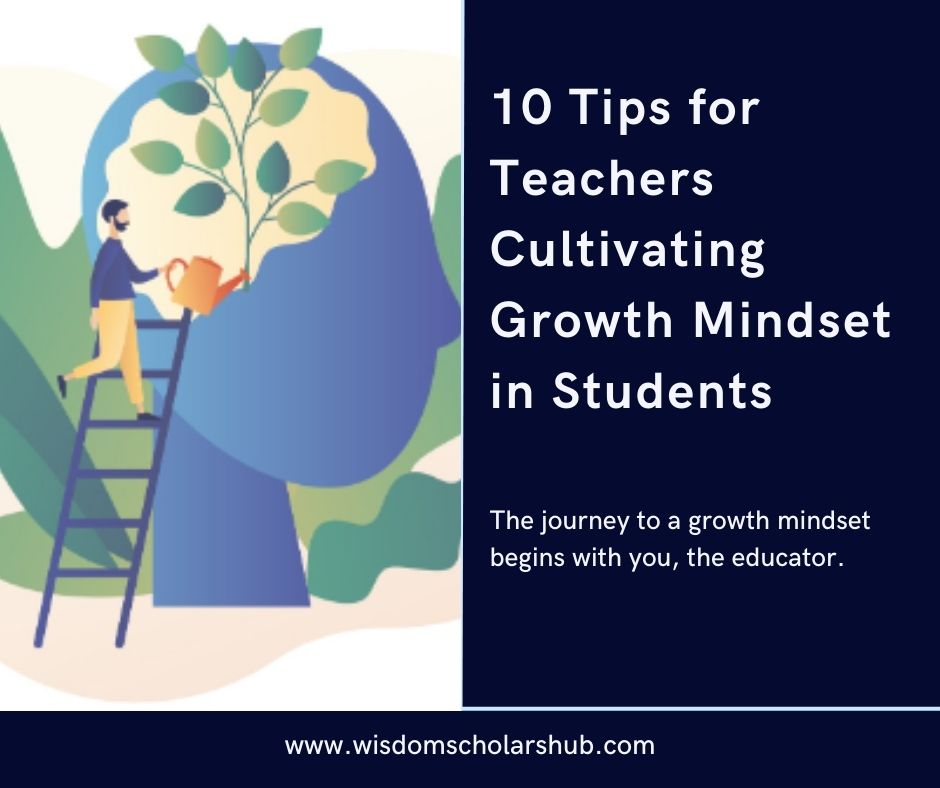
The concept of a “growth mindset” has been transforming classrooms around the world. But what exactly does it mean, and how can teachers effectively cultivate a growth mindset in their students? This guide will dive deep into the strategies educators can employ to inspire a love for learning, resilience in the face of challenges, and a belief that abilities can be developed through dedication and hard work.
Understanding Growth Mindset
A growth mindset, a term coined by psychologist Carol Dweck, is the belief that intelligence and abilities are not fixed traits but can be developed through effort, good teaching, and persistence. When students adopt this mindset, they become more resilient, open to feedback, and motivated to learn.
1. Embrace Challenges and Encourage Risk-Taking
One of the first steps in cultivating a growth mindset is to create an environment where challenges are welcomed, not feared. Teachers can encourage students to view challenges as opportunities for growth rather than obstacles. Activities such as project-based learning, problem-solving tasks, or creative assignments can stimulate critical thinking and innovation. Praise the effort, not just the result, and celebrate mistakes as essential learning experiences.
2. Promote the Power of “Yet”
Teaching students to add “yet” to their sentences can make a big difference in their mindset. For example, if a student says, “I’m not good at math,” guide them to say, “I’m not good at math yet.” This subtle shift in language reinforces the idea that skills and knowledge are achievable with time and effort. Incorporate “yet” into classroom discussions, posters, and activities to reinforce this growth-oriented thinking.
3. Provide Constructive Feedback
Feedback plays a crucial role in fostering a growth mindset. Instead of simply praising intelligence or talent, focus on the process-effort, strategies, and persistence. Constructive feedback should highlight what students did well and provide specific guidance on how they can improve. Use phrases like, “I noticed you tried different methods to solve this problem, which shows great persistence. Next time, try breaking the problem into smaller parts.”
4. Use Growth Mindset Language in the Classroom
Teachers can model a growth mindset by using language that encourages growth and learning. Replace fixed mindset phrases like “You’re so smart!” with “You worked so hard to solve that problem!” Highlight the value of effort, perseverance, and learning from mistakes. Make it a habit to recognize and reward resilience, curiosity, and a willingness to learn.
5. Incorporate Reflection and Goal Setting
Reflection activities encourage students to think about their learning process and recognize areas for improvement. Encourage students to set short-term and long-term goals and reflect on their progress regularly. Goal setting helps students take ownership of their learning and understand that growth happens incrementally. Classroom practices such as reflective journaling, self-assessment, or progress tracking can be effective tools.
6. Share Inspirational Stories and Examples
Introduce students to real-life stories of individuals who have demonstrated a growth mindset. This could include famous figures who faced failure but persisted, or even sharing stories from peers who have overcome academic or personal challenges. Stories can inspire students and reinforce the belief that effort and determination lead to growth.
7. Create a Safe Learning Environment
For students to adopt a growth mindset, they need to feel safe to take risks and make mistakes without fear of judgment or ridicule. Cultivate a classroom culture that promotes respect, empathy, and collaboration. Encourage peer support and teamwork, where students learn to give and receive feedback positively.
8. Engage in Professional Development
Teachers themselves should adopt a growth mindset. Continuous professional development, such as attending workshops, collaborating with colleagues, or engaging in self-reflection, can help educators stay informed about effective teaching strategies for cultivating a growth mindset.
9. Implement Mindset-Oriented Activities
Incorporate activities and lessons specifically designed to teach the principles of a growth mindset. This can include games, group discussions, brain-based learning activities, or exercises that highlight the brain’s plasticity. These activities can make the concept of growth mindset tangible and relatable for students.
10. Celebrate Progress and Effort
Regularly celebrate the progress and effort of students, both individually and as a class. This can be done through certificates, classroom displays, or simple verbal acknowledgments. When students see that their hard work is recognized, they are more likely to continue pushing through challenges.
Conclusion
Cultivating a growth mindset in students isn’t just about promoting positive thinking; it’s about fostering an environment where students believe in their potential to grow and succeed. By embracing challenges, providing constructive feedback, and creating a supportive classroom culture, teachers can empower their students to develop resilience, motivation, and a lifelong love of learning.
Encourage your students to believe in their ability to grow. The journey to a growth mindset begins with you, the educator.
Did you find these strategies helpful? Don’t keep them to yourself!
Subscribe to our blog for more educational insights, tips, and resources to enhance your teaching journey!
Share this post with your colleagues and join the conversation on how we can create a better learning environment for all students!










